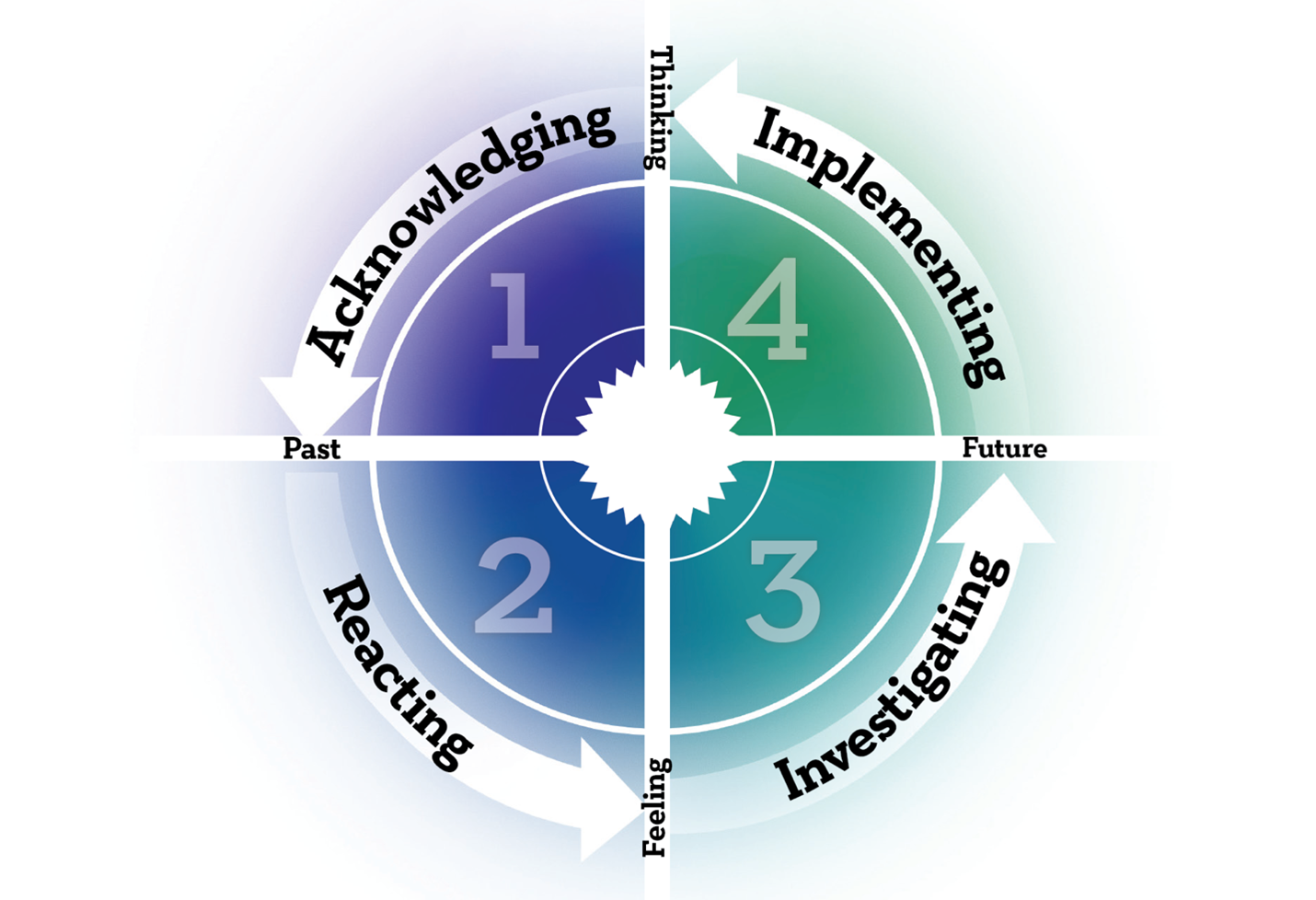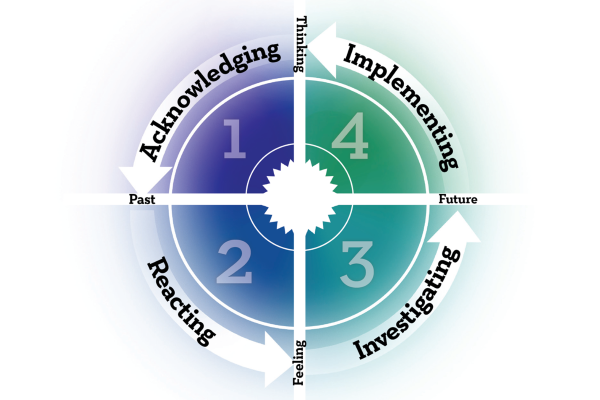“All change is hard at first, messy in the middle and gorgeous at the end”. A very pertinent quote for the world we are living in by one of the world’s foremost leadership experts, Canadian author Robin Sharma. We have faced our fair share of ‘hard’ and ‘messy’. Let’s hope ‘gorgeous’ is on its way.
The good news? Whether you have already been immersed in personal or professional change, or if you are newly embarking on a change journey for yourself or for your organization, there are best practices that can guide you along the way. One that has served me well throughout my career is a model developed by Multi Health Systems called Change Navigator. It is a simple and effective blueprint.

There are four steps in this change process. Knowing where you are at any moment in time and knowing where to go next can be really impactful. Remember, it is hard at first and it is messy in the middle so don’t be discouraged. Just keep reflecting on where you are and what actions you can take to move forward. Let’s look at the four steps.
Step 1: Acknowledging
Acknowledging change begins with awareness. In many cases this is also where the process of coping with feelings begins. In the early stages of change, emotions are apparent. This is a very normal part of being human so you should allow yourself or the team you are leading to experience these emotions. Sometimes we rush through this stage, which can appear later in our process as a pitfall. Patience is really critical here. As leaders we should focus on building acceptance and commitment with ourselves and with our teams.
Step 2: Reacting
Reacting is the second step in the change process. It usually comes on its own and can often begin with a change event. Something ‘happens’, and we react. It is also a critical step that requires us to become aware. Are you aware that you are reacting? And even further, are you aware why you are reacting? When you find yourself reacting to change or a change event, try to turn this awareness into progress. Denial is common and natural, which is why information is critical. Leaders should focus on building understanding of the need for change and the scope of the change initiative.
Step 3: Investigating
The step of investigating change is the most pivotal step. It begins after feelings are vetted and allows us to begin the process of exploring options. Anticipation is a common experience during the investigating step. It can start to feel really exciting and hopeful. Honesty is critical both to yourself and to the people you are trying to build change with. This presents a unique opportunity for leaders to focus on building commitment to the new reality. The more we visualize and talk about the outcome, the more real it becomes. This is how we turn hope into results.
Step 4: Implementing
The fourth and final step in the change process is to move towards implementation. This can only begin once direction has been defined. It is the process of understanding new expectations. This is the critical stage of growth, and learning is absolutely essential. Our hearts and minds have become open to the change and we now have a plan. New skills are essential as we build towards the future. Learning as a group or team, even if just reading together or sharing a digital learning experience, can really boost the all-important element of buy-in. This is the opportunity for leaders to focus on building new skills for themselves and their teams, as well as modelling and rewarding behaviours and norms that suit the future state.
The old adage that change is a natural part of life may feel a little cliché, but for most of us it is a true reflection of our life’s experience. I hope this change model has been helpful and can act as a tool for you and your organization as you navigate the change landscape. Remember, this is a process. It requires re-iteration. Try not to be discouraged for yourself or for anyone on your team who is moving through this process. Instead, try to reflect at any given moment where you are in the four-step process and get back on track.
I started this piece with a quote from Robin Sharma. So, I will end it with another. “Persist. Greatness loves the relentless.”
Joe Baker is President and CEO of Joe Baker & Co., a leadership consultancy focused on strengthening organizations and people at the core of a future-forward hospitality and tourism industry. Joe is a board member of Tourism HR Canada and presently working with the team at OTEC as a Strategic Advisor on the Tourism and Hospitality Emergency Response initiative. You can find Joe everywhere @thejoebaker.


Pingback: A Blueprint for Change – Tourism Strong